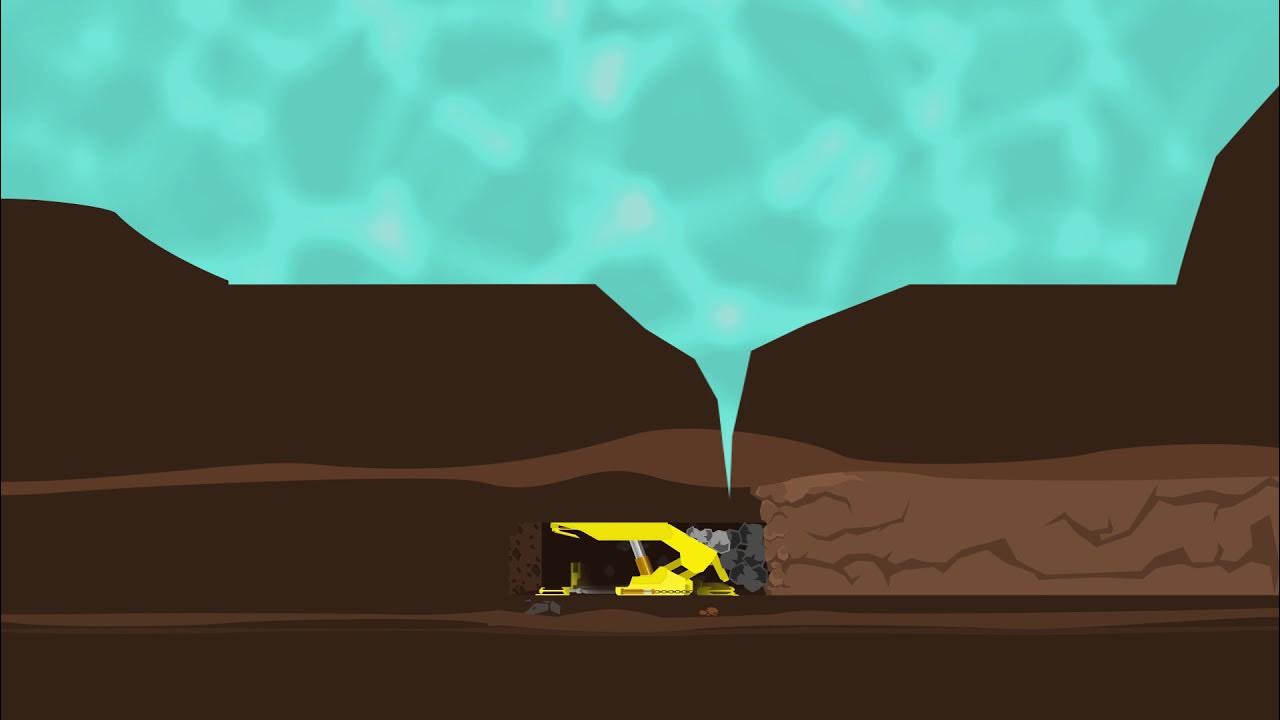Technology boosts ends 'wild west' of unlawful water use in NSW | Landline | ABC News
Summary
TLDRThe video script discusses water management issues in New South Wales, focusing on the Keepit Dam and illegal water usage by some farmers during droughts. It highlights the severe drought impacts, leading to water theft, prompting the establishment of an independent regulator (NRAR). The regulator uses advanced technologies like satellites, drones, and 3D dam modeling to monitor water compliance and enforce regulations. Efforts to prevent illegal water usage are improving, with farmers supporting these measures. The video emphasizes the importance of compliance for farmers, the environment, and local communities.
Takeaways
- 💧 The Keepit Dam on the Namoi River faced extreme drought conditions, with water levels dropping to 1%, but has now recovered after two years of good rainfall.
- 🚱 During droughts, water allocations for farms are cut, causing frustration among irrigators when illegal water use occurs.
- 🔍 A Four Corners investigation in 2017 exposed widespread non-compliance with water regulations in New South Wales, leading to reforms.
- ⚖️ The Natural Resources Access Regulator (NRAR) was established to enforce compliance, with a focus on preventing illegal water use.
- 📊 NRAR uses satellite imagery, drones, and real-time data to monitor water usage and detect illegal activity such as unauthorized dam filling or irrigation.
- 🚨 Water theft is not a victimless crime—it impacts fellow farmers, the environment, and local communities.
- 🌾 The cotton industry has been urged to make compliance with water regulations part of its social responsibility, with some steps taken since 2019.
- 🚁 Field officers conduct regular farm visits to check compliance, and these efforts are generally supported by compliant farmers.
- 🛰️ The use of advanced technology, including satellites and radar that can see through clouds, has significantly increased NRAR's ability to detect and prevent illegal water use.
- 👮 NRAR’s enforcement capabilities have improved dramatically, with more fines, prosecutions, and better oversight than in previous decades.
Q & A
What is the purpose of the Keepit Dam on the Namoy River?
-The Keepit Dam provides water for farmers, domestic users, and the environment.
How did the drought affect the Keepit Dam's water levels?
-During the drought, water levels in the Keepit Dam fell to a shocking one percent.
What issues led to the creation of the Natural Resources Access Regulator (NRAR)?
-Widespread illegal water use and poor enforcement of water regulations in New South Wales led to the establishment of the NRAR in 2017.
What are some tools NRAR uses to monitor water usage compliance?
-NRAR uses satellites, drones, planes, and airborne laser surveys to track water usage and detect illegal activity.
How does NRAR enforce water regulations?
-NRAR enforces regulations through fines, prosecutions, forced remediation of illegal earthworks, and public naming of offenders.
Why do some farmers risk taking water illegally?
-Farmers may take water illegally because the potential profits from crops grown with the stolen water can be substantial, while fines are often a fraction of the profit.
What role does technology play in improving NRAR’s monitoring efforts?
-Technology such as high-resolution satellite imagery, radar, and drones has significantly increased NRAR’s ability to monitor water usage in real-time, leading to more effective regulation and enforcement.
How has the cotton industry responded to water compliance issues?
-Since 2019, Cotton Australia has removed growers convicted of water offenses from its best practice program, allowing them back only after audits show compliance.
What is the social license concept mentioned in relation to the cotton industry?
-Social license refers to the idea that businesses should go beyond just following legal requirements and engage in responsible and ethical practices to maintain public trust.
How does NRAR combine 'boots on the ground' with 'eyes in the sky' for effective regulation?
-NRAR field officers visit farms to verify compliance, while technology like satellite imagery and drones helps provide real-time information that can be used as evidence in court.
Outlines

Этот раздел доступен только подписчикам платных тарифов. Пожалуйста, перейдите на платный тариф для доступа.
Перейти на платный тарифMindmap

Этот раздел доступен только подписчикам платных тарифов. Пожалуйста, перейдите на платный тариф для доступа.
Перейти на платный тарифKeywords

Этот раздел доступен только подписчикам платных тарифов. Пожалуйста, перейдите на платный тариф для доступа.
Перейти на платный тарифHighlights

Этот раздел доступен только подписчикам платных тарифов. Пожалуйста, перейдите на платный тариф для доступа.
Перейти на платный тарифTranscripts

Этот раздел доступен только подписчикам платных тарифов. Пожалуйста, перейдите на платный тариф для доступа.
Перейти на платный тарифПосмотреть больше похожих видео
5.0 / 5 (0 votes)






